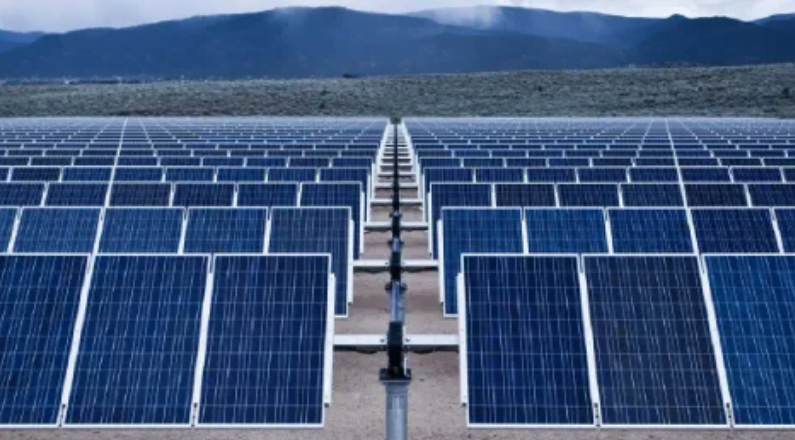India, a country with a burgeoning population and rapid urbanisation, is poised to become a global leader in renewable energy. Solar power, with its abundant availability and decreasing costs, is at the forefront of this transition. Developing cities in India presents unique challenges and opportunities for the growth of solar energy. India has made significant strides in the solar energy sector over the past decade. The National Solar Mission, launched in 2010, aimed to establish India as a global leader in solar energy. By 2025, India will have achieved an installed solar capacity of over 50 GW, positioning it among the top solar markets globally. Major states such as Rajasthan, Gujarat, and Tamil Nadu are at the forefront of this trend, escalating solar installations and innovation in utilising renewable energy sources. Developing cities such as Jaipur, Surat, and Indore are emerging as key players in this sector. These cities are increasingly integrating solar power into their energy mix, driven by both overnment policies and local initiatives. This blog thoroughly explores theseaspects, providing insights into the current scenario, hurdles to overcome, andpotential growth areas for solar power in these urban centres.

Table of Contents:
| S.No | TOPICS |
| 1 | Introduction |
| 2 | Challenges in Developing Cities |
| 3 | Opportunities for Growth |
| 4 | Conclusion |
Introduction
India is undergoing a rapid transformation with its cities expanding and urban populations growing at an unprecedented rate. As these developing cities strive to meet the increasing energy demands, there is a pressing need to explore sustainable and renewable energy sources. Solar power stands out as a promising solution due to India’s abundant sunshine and the decreasing costs of solar technology. However, the integration of solar panels in these burgeoning urban areas presents both challenges and opportunities. This blog delves into the current scenario of solar power in India’s developing cities, examining the hurdles that need to be overcome and the potential avenues for growth and innovation.
Challenges in Developing Cities
High Initial Costs:
Despite the reduction in solar panel prices, the initial installation cost remains a barrier, particularly in developing cities where disposable income is lower. Financing options are often limited, making it difficult for individuals and small businesses to invest in solar energy.
Lack of Awareness and Expertise:
A significant challenge is the lack of awareness and technical expertise about solar energy. Many potential users are unaware of the long-term benefits and savings associated with solar power. Additionally, there is a shortage of skilled professionals to install and maintain solar systems.
Grid Connectivity Issues:
Developing cities often face challenges related to grid connectivity. The integration of solar power into the existing grid can be complex, requiring significant upgrades and investments. Issues such as power fluctuations and grid stability need to be addressed.
Land Availability and Urban Density:
High population density and limited land availability in urban areas pose a challenge for large-scale solar installations. Rooftop solar systems are a viable alternative, but they require structural assessments and approvals, adding to the complexity.
Regulatory and Policy Barriers:
Inconsistent policies and regulatory frameworks across states create confusion and hinder the growth of solar energy. Streamlining policies and providing clear guidelines can facilitate smoother adoption of solar power.
Opportunities for Growth
Government Initiatives and Subsidies:
The Indian government has introduced several initiatives and subsidies to promote solar energy. Schemes like the Pradhan Mantri Kisan Urja Suraksha evam Utthaan Mahabhiyan (PMKUSUM) and the rooftop solar subsidy program provide financial incentives and support for solar installations.
Innovative Financing Models:
Innovative financing models such as solar leasing, power purchase agreements (PPAs), and crowdfunding can make solar power more accessible. These models reduce the burden of upfront costs and provide flexible payment options.
Technological Advancements:
Advances in solar technology, such as high-efficiency panels, solar tracking systems, and energy storage solutions, can enhance the viability and efficiency of solar installations. Smart grids and IoT integration can further optimize energy management.
Rooftop Solar Potential:
Rooftop solar systems offer a significant opportunity for urban areas with limited land availability. Promoting residential and commercial rooftop installations can substantially increase solar capacity. Policies that incentivize net metering and feed-in tariffs can encourage more rooftop solar projects.
Corporate and Industrial Adoption:
Corporates and industries in developing cities are increasingly adopting solar power to reduce operational costs and enhance sustainability. This sector presents a huge opportunity for largescale solar installations and captive power plants.
Public-Private Partnerships:
Collaboration between the government and private sector can accelerate the growth of solar energy. Public-private partnerships (PPPs) can drive investments, provide technical expertise, and ensure efficient project implementation.
Conclusion
The journey towards widespread adoption of solar panels in India‘s developing cities is marked by both significant challenges and immense opportunities. While high initial costs, lack of awareness, and regulatory hurdles pose obstacles, the potential benefits of solar energy are too substantial to ignore. Government initiatives, innovative financing models, and technological advancements are paving the way for a solar revolution in urban India. By addressing these challenges head-on and capitalizing on the opportunities, developing cities can harness the power of the sun to meet their energy needs sustainably. This transition not only promises a greener future but also fosters economic growth and energy independence, positioning India as a global leader in renewable energy.

